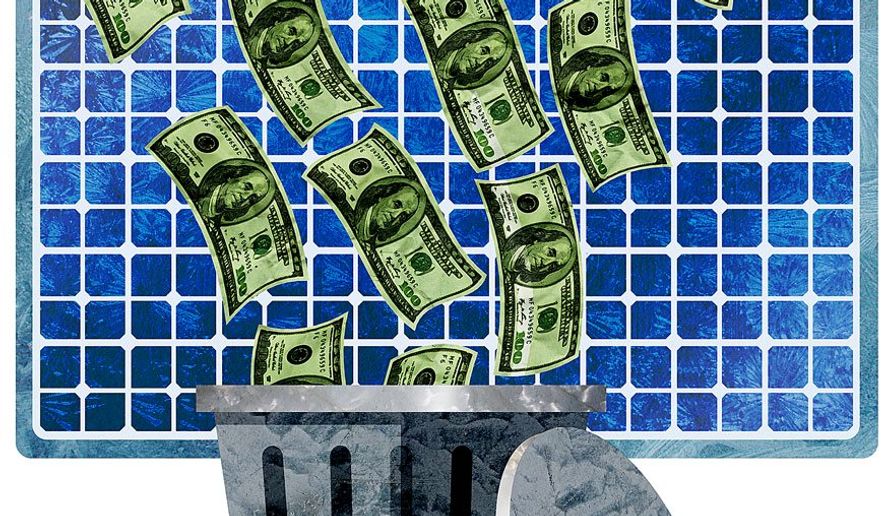OPINION:
Environmentalists say they want to preserve the natural world in its original, pristine state. Yet the climate change activists among them would instead cast a solar-panel shroud of human fabrication over parts of the great American West. President Biden has given them the green light.
The Department of the Interior’s Bureau of Land Management last month updated its Western Solar Plan, detailing options to open public land for large solar projects. The bureau’s earlier blueprint allowed 16 million acres of public land to be used for solar development, which has now been enlarged to 22 million acres across 11 Western states. That’s more than 34,000 square miles — about the size of Maine.
Only portions of this land would be used. There are exclusions for steeply sloped terrain, tracts containing sensitive environmental and cultural resources, and land beyond a 10-mile distance from current or planned transmission lines. Altogether, about 700,000 acres would be used to support the administration’s plan to convert the entire electric grid to intermittent sources such as solar and wind by 2035.
The scheme would add to the more than 11,000 megawatts of solar, wind and geothermal energy the administration boasts it has already approved, which will provide electricity for more than 3.5 million homes — unless it’s a cloudy or windless day. The Interior Department’s period for public comment on the revised plan ends April 18.
In addition to the massive human footprint blighting the natural environment, solar energy development has other downsides. Most obvious is that even in the sun-drenched West, the sun doesn’t shine at night, which means backup power must always remain on standby.
And while solar panel manufacturing has exploded to meet growing world demand, it is not the United States that stands to benefit from Mr. Biden’s green energy policies. In the past decade, China has grabbed a more than 80% market share of panel manufacturing, according to the International Energy Agency. Increasing U.S. supply chain dependence and China’s export profits is hardly what the president has in mind with his “build back better” agenda.
Also, solar panels lose their capacity to transform sunlight into electrons in the course of an estimated 30 years of use. What to do with the expired sheets of glass and metal that no longer generate power? According to the Department of Energy, the cost of recycling runs up to $45 per panel, which is far more than the $5 cost of disposal. That means most are destined for a landfill.
The consequence is a heap of trash that the International Renewable Energy Agency estimates could weigh in at 77 million tons by 2050 — yet another environmental blight. With next-generation panels providing greater efficiency at lower cost, the option of replacing aging panels with new ones could result in 50 times as much waste, according to a 2021 Harvard Business Review study. Oops.
President Biden’s solar plan could leave Americans — environmentalist or not — questioning whether shrouds of reflective glass and mountains of shiny rubbish is the future they want for the great American West.




Please read our comment policy before commenting.